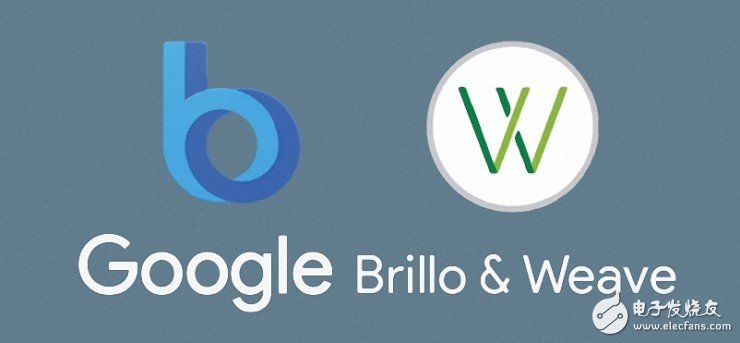The Internet of Things has always been considered the third revolution to subvert people's lives after computers and mobile Internet.
According to a report released by BI Intelligence, a foreign data research institute this fall, by 2020, the total number of devices connected via the Internet of Things will reach 24 billion, accounting for 70% of the total number of connected devices in the world. In the next five years, the total cost of the global Internet of Things solution is expected to reach $6 trillion.
Faced with such a huge market, as one of the technology giants in the Internet era, Google will naturally not turn a blind eye. In fact, since 2011, Google’s layout in the Internet of Things has entered the field for the first time.

In May 2011, at the Google I/O conference that year, Google first proposed the Android@Home smart home program. With Android@Home, users can control a range of smart home products such as lights, air conditioners, and audio players on an Android phone or tablet.
In terms of technology implementation, Android@Home adopts ZigBee technology based on IEEE802.15.4 standard, and its transmission characteristics are low power consumption, low cost and low latency. At the same time, Google also opened a dedicated API interface for home appliance control at the bottom of the Android operating system. The conforming home appliance establishes a physical connection with the mobile phone through ZigBee technology, and the Android application can realize a series of these appliances through a dedicated API. Intelligent control, in addition to remote switch operation, some smart light products can even produce stroboscopic effects when the user plays the game.
In 2012, Google released a spherical streaming media player called Nexus Q based on Android@Home, which is regarded by the outside world as the benchmark for Google to enter smart home with Android@Home. But unfortunately because of the high pricing and support for Google's built-in services, Nexus Q has not been popular with consumers, and has been rushed off the shelf in early 2013. At this point, Google's efforts to enter the smart home with its own products failed, and in the following nearly a year, Android@Home gradually faded out of people's vision.
As a company that specializes in software products, Google's efforts to build an Internet of Things software platform will naturally not disappear with the failure of Android@Home.
In October 2014, Google announced the source code of The Physical Web project, hoping to establish a set of interoperability standards between intelligent hardware through a uniform resource locator (URL). The user does not need to download a special App, and only needs to click on the URL link corresponding to a certain device as when browsing the webpage, thereby realizing the operation of the intelligent hardware. But as an early experimental project, Google did not officially launch, but only a small range of communication in the developer community.
At the 2015 Google I/O conference, Google officially launched the IoT RTOS real-time operating system called Brillo and the JSON-based IoT communication language Weave for IoT applications.
Among them, Brillo is a very simplified Android operating system, which removes all the complicated upper interfaces and leaves only the core of the operating system, so that Brillo can be easily embedded in various types of intelligent hardware such as doorbells, surveillance cameras, ovens, etc. in.
Weave is based on json's intelligent hardware communication language. Google intends to create a common communication and command transmission and reception solution between intelligent hardware, so that intelligent devices can realize independent interaction and communication through Weave. For example, when the user locks the door, no manual operation is required, and the oven and air conditioner detect the state of the door lock and actively turn off the power.
After the I/O conference, Google released an open source low-power Bluetooth communication platform, Eddystone, in July to counter Apple's iBeacon and retain its voice in the IoT near-field communication technology.
Earlier this year, Google hosted the Ubiquity Developer Summit for technologies such as Brillo, Weave, and Eddystone, giving developers a comprehensive introduction to the implementation details of these technologies to help them develop more deeply under Google's IoT framework.
At this point, Google has formed a comprehensive layout from the operating system to the communication protocol in the Internet of Things software.
Hidden design
One second stretch, free storage
Strong and durable
Aluminum alloy plug, TPE cover
Ultrasonic welding pressure
Close fitting, firm resistance to fall
Strong and durable
Priority TPE
It's hard to break even if you stretch multiple times
Stretching or shrinking only one end can easily to damage the components and cause jamming
No winding
Stretch when used, shrink when not used
Five lengths
Each pause is a length, suitable for multiple occasions
Notice
Both cables are stretched at the same time
Do not stretch unilaterally
Cable Data,Best Data Cable,Data Cable Charger,Data Transfer Cable
Guangzhou HangDeng Tech Co. Ltd , https://www.hangdengtech.com